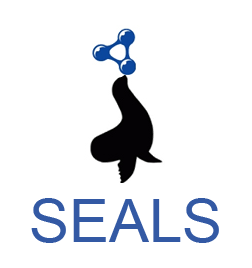

We have run the evaluation in a Ubuntu Laptop with an Intel Core i7-4600U CPU @ 2.10GHz x 4 and allocating 15Gb of RAM.
Precision, Recall and F-measure have been computed with respect to a UMLS-based reference alignment. Systems have been ordered in terms of F-measure.
In the OAEI 2015 largebio track 12 (13 considering XMAP variant) out of 22 participating OAEI 2015 systems have been able to cope with at least one of the tasks of the largebio track.
Note that RiMOM-IM, InsMT+, STRIM, EXONA, CLONA and LYAM++ are systems focusing on either the instance matching track or the multifarm track, and they did not produce any alignment for the largebio track. COMMAND and Mamba did not finish the smallest LaregBio task within the given 12 hours timeout, while GMap and JarvisOM gave an "error exception" when dealing with the smallest LargeBio task.
LogMapBio uses BioPortal as mediating ontology provider, that is, it retrieves from BioPortal the most suitable top-10 ontologies for the matching task.
LogMap uses normalisations and spelling variants from the general (biomedical) purpose UMLS Lexicon.
AML has three sources of background knowledge which can be used as mediators between the input ontologies: the Uber Anatomy Ontology (Uberon), the Human Disease Ontology (DOID) and the Medical Subject Headings (MeSH).
XMAP has been evaluated with two variants: XMAP-BK and XMAP. XMAP-BK uses synonyms provided by the UMLS Metathesaurus., while XMAP has this feature deactivated. Note that matching systems using UMLS-Metathesaurus as background knowledge will have a notable advantage since the largebio reference alignment is also based on the UMLS-Metathesaurus. Nevertheless, it is still interesting to evaluate the performance of a system with and without the use of the UMLS-Metathesaurus.
Together with Precision, Recall, F-measure and Runtimes we have also evaluated the coherence of alignments. We have reported (1) number of unsatisfiabilities when reasoning with the input ontologies together with the computed mappings, and (2) the ratio/degree of unsatisfiable classes with respect to the size of the union of the input ontologies.
We have used the OWL 2 reasoner HermiT to compute the number of unsatisfiable classes. For the cases in which HermiT could not cope with the input ontologies and the mappings (in less than 2 hours) we have provided a lower bound on the number of unsatisfiable classes (indicated by ≥) using the OWL 2 EL reasoner ELK.
In this OAEI edition, only two systems have shown mapping repair facilities, namely: AML and LogMap (including LogMapBio and LogMapC variants). The results show that even the most precise alignment sets may lead to a huge amount of unsatisfiable classes. This proves the importance of using techniques to assess the coherence of the generated alignments.
1. System runtimes and task completion
2. Results for the FMA-NCI matching problem
3. Results for the FMA-SNOMED matching problem
4. Results for the SNOMED-NCI matching problem
5. Summary results for the top systems
6. Harmonization of the mapping outputs
7. Mapping repair evaluation